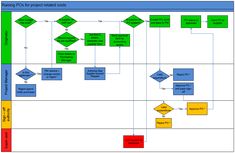Content

Current assets, such as cash, accounts receivable and short-term investments, are listed first on the left-hand side and then totaled, followed by fixed assets, such as building and equipment. If you apply for a loan, your financial statements can help demonstrate to lenders that you are likely to repay your debts in a timely manner. Potential investors use balance sheets to understand where their funding will go and when they can expect to see a return on their investment.
Why Is a Balance Sheet Important?
The balance sheet is an essential tool used by executives, investors, analysts, and regulators to understand the current financial health of a business. It is generally used alongside the two other types of financial statements: the income statement and the cash flow statement.Balance sheets allow the user to get an at-a-glance view of the assets and liabilities of the company. The balance sheet can help users answer questions such as whether the company has a positive net worth, whether it has enough cash and short-term assets to cover its obligations, and whether the company is highly indebted relative to its peers.
The return to the acquiring company will be realized only if, in the future, it is able to turn the acquisition into positive earnings. A company can use its balance sheet to craft internal decisions, though the information presented is usually not as helpful https://business-accounting.net/ as an income statement. A company may look at its balance sheet to measure risk, make sure it has enough cash on hand, and evaluate how it wants to raise more capital . It is essential for an organization to determine when the financial year ends.
How to Prepare a Basic Balance Sheet
Remember that you can also calculate other common financial ratios! You’ll also want to subtotal your current liabilities and long-term liabilities in the same way. If you want to know where your business’s money is really coming and going, you’ll want to learn how to make a balance sheet. Using a balance sheet is one of the best ways to determine and track your company’s financial health. A balance sheet helps you determine your business’ liquidity, leverage, and rates of return. When your current assets are greater than your liabilities, your business is likely in a good financial position and is able to cover your short-term financial obligations.
- Without cash in reserve, you might need to scramble to secure financing quickly.
- Additionally, you can analyze historical trends in your assets and liabilities to ensure your business is running properly, or to identify problem areas quickly.
- Real estate, for example, has to appreciate faster than both inflation and the interest cost of the loan in order to turn a profit.
- Current assets are considered anything that can be converted into cash quickly.
- C corporations must file a balance sheet with their corporate tax return.
Editorial content from The Ascent is separate from The Motley Fool editorial content and is created by a different analyst team. While having a template can speed the process considerably, you’ll still have to calculate the number and run the risk of error.
Balance Sheet Templates
Large capital equipment producers, such as farm equipment manufacturers, require a large amount of fixed-asset investment. Service companies and computer software producers need a relatively Useful Advice on How to Make a Balance Sheet small amount of fixed assets. Mainstream manufacturers typically have 25% to 40% of their assets in PP&E. Accordingly, fixed asset turnover ratios will vary among different industries.

Equity can also drop when an owner draws money out of the company to pay themself, or when a corporation issues dividends to shareholders. You record the account name on the left side of the balance sheet and the cash value on the right.
Small Business Finance Blog
Days inventory outstanding is the average number of days that inventory has been in stock before selling it. The strength of a company’s balance sheet can be evaluated by three investment-quality measurements. Chip Stapleton is a Series 7 and Series 66 license holder, CFA Level 1 exam holder, and currently holds a Life, Accident, and Health License in Indiana. He has 8 years experience in finance, from financial planning and wealth management to corporate finance and FP&A. A solvency ratio is a key metric used to measure an enterprise’s ability to meet its debt and other obligations. Interest payable is accumulated interest owed, often due as part of a past-due obligation such as late remittance on property taxes. You can also compare your latest balance sheet to previous ones to examine how your finances have changed over time.
If you’re looking for investors, having a balance sheet available for them to look at can make you stand out — and support their investment value. The balance sheet provides an overview of your business’ financial standing. If your business is doing well, investors can look at your balance sheet and see if you have a profitable business they’d like to invest in. It can also help you diagnose problems, pinpoint financial strengths, and keep track of your business’ financial performance over time. Thinking about hiring an accounting firm for help preparing your balance sheet?
